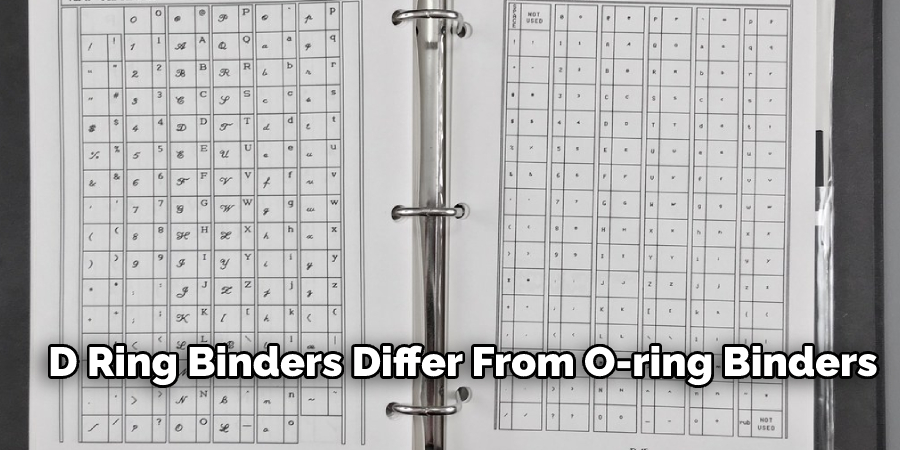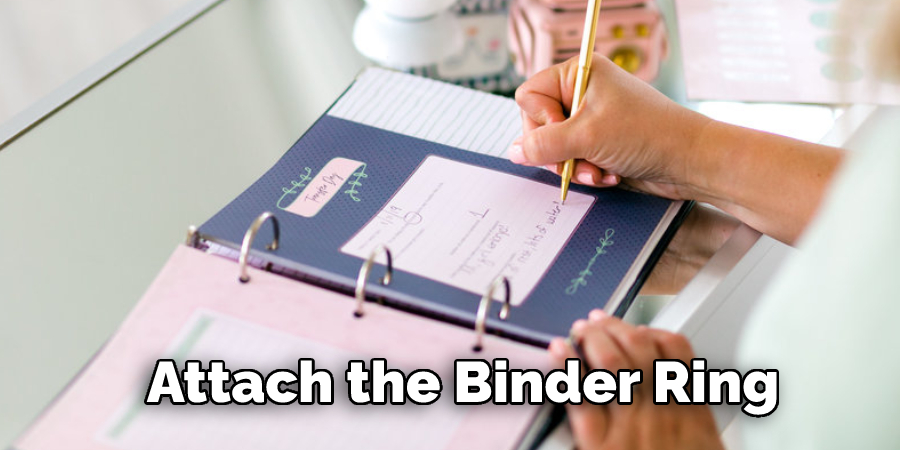A D ring binder is a common binder used in offices and schools. It has two metal rings on the spine that allow pages to be turned easily. D ring binders come in various sizes and are often used to store large documents or presentations.

They can also be used for smaller projects, such as creating a scrapbook. Because of their size, D ring binders are often more expensive than other types of binders. However, they provide an efficient way to keep large quantities of paper organized and easy to access. In this blog post, we are going to explain what is a d ring binder and how does it work. Read on to know more!
How Does a D Ring Binder Work?
A D Ring Binder is a notebook with a ring mechanism attached to the edge of its covers. These rings have two functionalities: they allow for expanding or contracting the size of the binder, and they allow for pages within the notebook to be added or removed. In addition, some D Ring binders are designed with an additional pocket on the notebook’s inside front or back cover.
A D Ring Binder works by inserting pages into slots on either side of the ring mechanism, and the rings are then tightened to secure one or more pages within the notebook. When a page is no longer needed, it can be easily removed and reinserted anywhere in the binder.
What Are the Uses of a D Ring Binder?
D Ring binders are best suited for long-term usage and storage of information. They allow users to add or remove pages as necessary, but they don’t allow users to separate an individual page from the rest of the notebook without removing it completely.
Consumers can find D Ring binders in many different sizes and can often adjust the number of pages they hold by tightening or loosening the ring mechanism. These binders also allow customization with accessories such as pen loops, pockets, and labels.
Difference Between D Ring and O-ring Binders:
D ring binders differ from O-ring binders in that they have a round plastic piece inserted on the front of the binder that is used to open and close it. It has become more popular than the traditional O-ring binder because of its added convenience and sleek look. In addition, a D Ring Binder comes with an ergonomic design.

As with any product, there are advantages and disadvantages to both types of binders. O-ring binders are cheaper than D-ring binders because they have fewer parts, but it is harder to flip through their contents. A D-Ring binder has more functionality compared to an O-ring binder. It provides the user with added comfort because it lays flat while the pages are turned. D-ring binders are better for people who want to flip through their contents often.
Instructions: How to Use a D Ring Binder
Step 1:
The first step is to put a binder ring in the front of a notebook. A binder ring is a circle-shaped piece of metal with two holes on each side, usually attached at one end to another object. One side has an opening and closing mechanism, while the other is flat. Depending on the type of bind you are doing, you may need to use a different color notebook. Some have separate sections for each subject, and some do not.

Step 2:
The next step is to attach the binder ring to another object such as a wall, filing cabinet, or drawer if you plan to keep it stationary anywhere in your house. However, if you want to take it with you, you will have to hold the binder ring yourself.
Step 3:
The third step is simple enough, open the binding mechanism until it reaches a point where the notebook can stand upright. Again, you may need to use a pen or something heavier than your hand so that not all of the weight rests on the rings.
Step 4:
The fourth step is to place the notebook open on a surface. You can start this process by closing it and opening it from the back to ensure that there are no pages in front of the binder ring. Next, place your paper or book between two rings about three inches apart, with the top facing down.
Step 5:
The final step is to write on your paper or book and enjoy! When you are done, take out the papers and close the notebook so that it can stand upright again using the binder ring as support. If you want to read something else or take a break from writing altogether, you can open the binder ring and take out or replace certain pages. When you are done, just put them back in place so that everything is neat and orderly.
Step 6:
The sixth step is to store your notebooks away when not in use, so they aren’t damaged by dust, dirt, moisture, etc. If you have a lot of notebooks, you can stack them neatly in a filing cabinet or a corner so that they aren’t in your way when not being used.
Some Tips and Suggestions:
1. Keep your binders in a dry place.
2. Avoid bending the ring mechanism when inserting or taking out papers.
3. Place the binder upright on its bottom side when it isn’t used to allow air flow and keep moisture away from the binding area.
4. If you do not plan on using your binder for an extended time (such as over the summer), keep it in a sealed ziplock bag.
5. Ensure all dividers and sheets are stored inside the binder to avoid accidental loss or damage caused by environmental factors such as humidity, water, dust, etc.
6. If you plan to store your binder for a long time, you can put silica gel packets inside the ziplock bag to absorb any residual moisture.
You may read also How to Fix Binder Rings
Conclusion:
A D ring binder has two metal rings, or “D” rings, on the spine to hold pages in place. They are made from either plastic or vinyl and come in various colors and sizes. D ring binders are often used for holding large quantities of paper, such as school textbooks or manuals.
Some companies also use them for storing and organizing documents internally. We hope this blog post has been helpful to give you the answer what is a d ring binder. If you have any questions or want to know more, then feel free to comment below!

